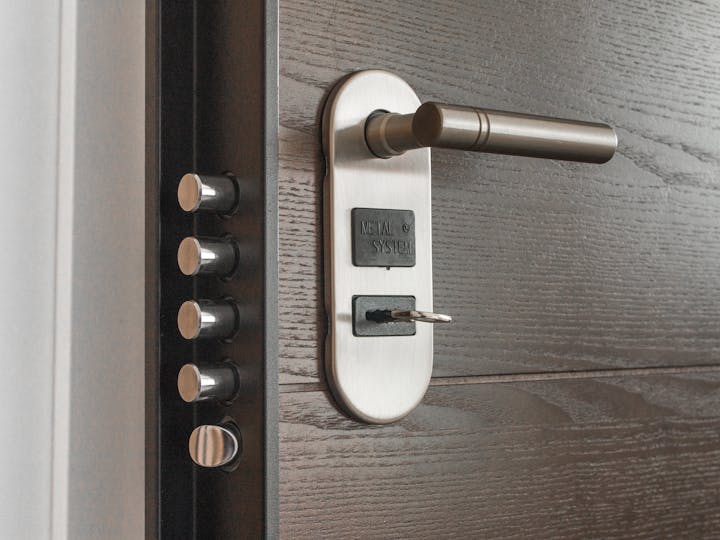Your home is your sanctuary, and protecting it should be a top priority. A well-designed security system acts as your first line of defense, deterring intruders, alerting you to emergencies, and providing peace of mind. If you plan to install a new security setup or upgrade your existing one, understanding the key components and proper configuration is essential. Here’s a complete guide to help you get started.
Why Is a Home Security System Important?
A comprehensive home security system is crucial for safeguarding your family, valuables, and property. It offers real-time alerts, remote access, and peace of mind, especially when you’re away. Modern security solutions are more accessible and flexible than ever, allowing you to customize your system to suit your home’s unique needs.
Essential Components of a Home Security System
A complete security setup relies on the seamless integration of several core devices. Let’s explore the main components you should consider:
1. Control Panel (Main Hub)
This device is the brain of your system. It manages all sensors, cameras, and alarms while enabling communication with your smartphones or monitoring services. The control panel is essential for coordinating and activating your entire security setup.
2. Entry and Exit Detectors
These sensors are installed on doors and windows to detect when they are opened or forced open. They serve as your first line of defense, immediately alerting you if someone unlawfully tries to access your home.
3. Motion Detectors
Placed inside the home, motion detectors sense movement in monitored areas. They are instrumental during night hours or when the house is unoccupied, catching intruders who bypass external sensors.
4. Surveillance Cameras
Cameras provide live video feeds and recordings of activity around your property. Aim for high-definition cameras with motion detection, night vision, and remote viewing capabilities to monitor your home in real time.
5. Environmental Sensors
These sensors monitor hazards like smoke, carbon monoxide, water leaks, or extreme temperatures. They offer early warnings to prevent damage and protect your loved ones against unseen dangers.
6. Audible Alarms and Sirens
When an alarm is triggered, loud sirens and flashing lights activate to alert residents and neighbors, potentially scaring off intruders and attracting emergency assistance.
7. Mobile Apps and Remote Access
Many modern systems support remote control through smartphone applications, enabling you to monitor live feeds, arm or disarm the system, and receive alerts from anywhere.
How to Properly Configure Your Home Security System
Installation and configuration are crucial for maximizing your system’s effectiveness. Follow these steps for proper setup:
Step 1: Assess Your Home’s Security Needs
Start by evaluating your property for vulnerable points — main entrances, garage doors, backyards, and windows. Consider your daily routine and identify areas that require around-the-clock monitoring or special attention.
Step 2: Choose Compatible and Scalable Devices
Select a security system with compatible and integrated devices. A scalable system allows new sensors or cameras to be added over time, ensuring future-proof protection.
Step 3: Strategic Placement of Detectors and Cameras
Place entry sensors on all exterior doors and accessible windows. Position motion detectors in hallways and large rooms, avoiding areas that might trigger false alarms (like pets or curtains). Mount cameras at entry points, driveways, or secluded spots — ensuring clear, unobstructed views.
Step 4: Network and Power Setup
Connect your control panel and cameras to a secure Wi-Fi network. Use wired connections for stability, but wireless setups offer greater flexibility. Ensure power backups, such as batteries or uninterruptible power supplies (UPS), are in place to keep the system active during outages.
Step 5: Configure Alerts and Automation
Set your system to send instant notifications for suspicious activity or hazards. Enable automation features such as turning lights on when motion is detected or locking doors remotely, to enhance security and convenience.
Step 6: Conduct a System Test
Test every sensor, camera, and alarm to verify they activate correctly and send alerts. Adjust positions if necessary for optimal performance. Regularly testing your system ensures continuous, reliable operation.
Step 7: Maintain and Update Regularly
Keep firmware updated, replace batteries periodically, and wipe cameras for clear footage. Routine maintenance guarantees your system remains effective.
Final Thoughts
Designing your home security system doesn’t have to be complicated. By selecting the right combination of sensors, cameras, and control devices and configuring them thoughtfully, you can create a safer environment for your family and your property.
Start by clearly assessing your needs, choosing compatible devices, and ensuring proper installation and testing. A well-planned home security system is an investment in peace of mind that will serve your family for years. Regular upkeep and staying informed about new security technologies will help you adapt and enhance your system over time.
.

